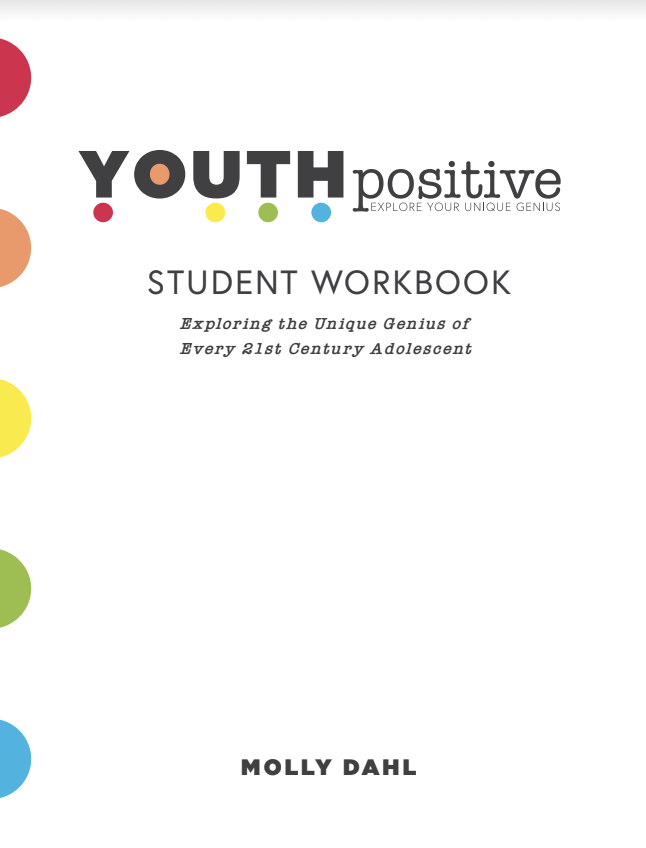Shop Our Books
$20.00
The Art of Emotional Resilience
We all have emotions, yet how well do we understand them? Can we explain what they are? In The Art of Emotional Resilience, author Molly Dahl discusses what the emotions are, why we have them, and what we can do to enjoy more of the positive ones. She shares what we can do to understand, and change, the powerful negative emotions that sometimes run away with our logical thinking and good behavior. Read reviews here!
$19.95
YOUTH Positive Student Workbook
Designed for more visual engagement, the Workbook contains the same content as the High School Edition, modified to support the earlier stages of adolescent brain development. The written component of each lesson is brief and each page has colorful visuals and easy-to-fill in check lists, likert scales, and self-rankings. Included at the end of each unit is a “Just for Fun” activity that offers students a brain-break before diving in to the next section.
$39.95
YOUTH Positive, High School Edition
The philosophy of YOUTH Positive is one of self-understanding and personal management during these exciting years, introducing ideas of mindfulness and practices like brain breaks as simple-to-comprehend concepts with easy-to–re-create techniques. Each section of the workbook presents focus questions to promote self-discovery, encouraging adolescent readers to answer through writings or drawings. In academic settings where the focus is solely on grades and test scores, it is easy to see how a philosophy of self-knowledge and positivity would be both appealing and helpful during those tumultuous teen years. Read the Kirkus review here!
$64.95
YOUTH Positive Teacher’s Guide
The comprehensive Teacher’s Guide shares the philosophy of YOUTH Positive; how and why it was created; how to use it to support lesson/content delivery; and what teachers, counselors, and coaches can expect. Each lesson provides:
The Lesson Title
Quote to capture the essence of the Lesson
Specifics - if there is a video that supports the lesson, if you need to recycle a concept from a previous chapter/lesson, etc
Lesson Objective
Essential Questions(s)
The Personal Experiment
Teaching Tips




